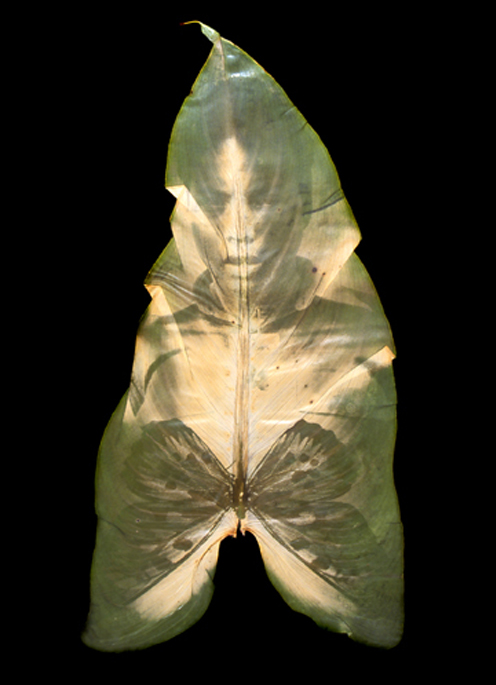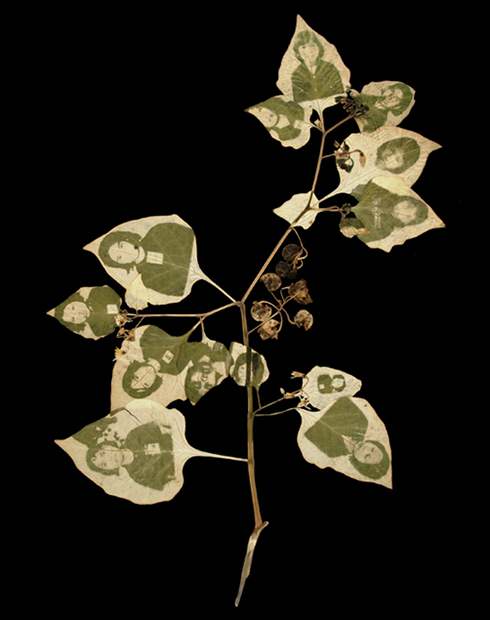Photographer Binh Danh created these beautiful “chlorophyll prints” (photographs printed onto leaves) to honour the memory of the almost 2 million people that lost their lives to murder and famine when the Khmer Rouge forced the urban population into the countryside to fulfill their ideal of an agrarian society. Between 1975-1979 the Khmer Rouge, organized by their leader Pol Pot—arrested, tortured, and eventually executed anyone suspected of belonging to several categories of supposed "enemies," such as foreigners who were ethnic Vietnamese.
In a Security Prison coded-named S-21, which was once a schoolhouse, 14,000 men, women and children were tortured and killed. Their testimony was meticulously documented to justify their execution. When Cambodia was liberated by the Vietnamese in 1979, barely a dozen survived S-21.
From start to finish, his technique is this: Binh Danh begins by picking a leaf -- often from his mother's garden. To keep it from drying out, he fills a small bag with water and ties it to its stem. He places the leaf on a felt-covered board, and puts a negative directly on the leaf (he has an archive of images he's collected from magazines and purchased online). He places glass over the leaf, clips the glass and board together, and puts the assemblage on the patio roof.
Binh Danh will check the image periodically to see how it's "baking." The process can last days or weeks. Four out of five times, he's dissatisfied, and throws the leaf away. But when the chlorophyll print is right -- whether precisely rendered or eerily vague -- he takes the leaf, fixes it in resin, and frames it. [via npr.org]
Binh Danh will check the image periodically to see how it's "baking." The process can last days or weeks. Four out of five times, he's dissatisfied, and throws the leaf away. But when the chlorophyll print is right -- whether precisely rendered or eerily vague -- he takes the leaf, fixes it in resin, and frames it. [via npr.org]
Binh Danh (MFA graduate from Stanford University) has been included in important exhibitions at museums across the country, as well as the collections of the Corcoran Art Gallery, The Philadelphia Museum of Art, the deYoung Museum, and the George Eastman House, among many others.







